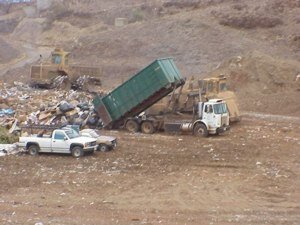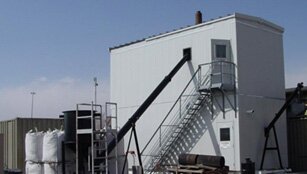|
The ability to take large volumes of waste material, for example; 
- Bagasse and Cachaza
- Rice Straw and Rice Hulls
- Plastics, Diapers, Paper and Tires
- Other Agricultural Wastes
- Waste Coal and Oil
- Biosolids,
- Animal Waste
- Medical Waste
- Municipal Solid Waste
- Grass and Yard Clippings, and
- Other landfill bound waste, etc.,
and recover valuable energy and fuels, while leaving a comparatively very small amount of benign material has far reaching implications. There is a natural synergy between the company's technology and those public agencies and private companies tasked with handling enormous volumes of society's waste products.

Landfills and other waste storage and handling facilities are always sources of contention and controversy. Our technology has the capability of drastically reducing in volume the amount of objectionable waste that must be handled. At the same time, the volume of residue we return to them, depending on the feedstock, is reduced to a very small fraction of its original volume and weight and can greatly extend the life and improve the characteristics of existing landfills
Moreover, its character is changed drastically from the original feedstock to a benign clay-like solid or ash; odorless, nontoxic and nonhazardous. It is easily compacted and will not generate landfill gas. Often, there is a resultant market for the material, generating additional revenue streams.
It is also a happy irony that the most problematic materials for landfills, plastics, paper, diapers, etc., are generally excellent sources of energy and fuels for our process yielding high energy recovery rates with very little residue or ash.
|


